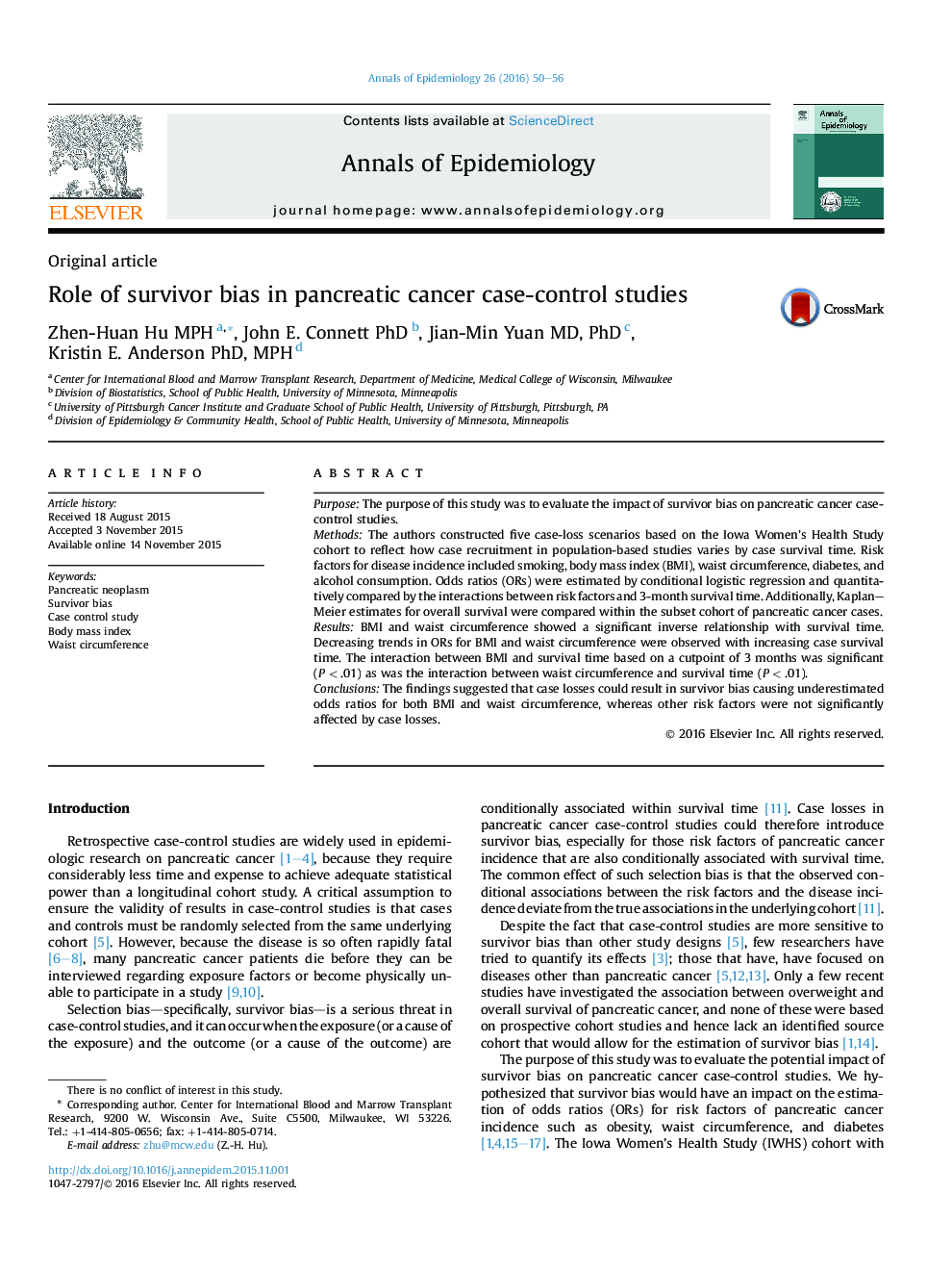| کد مقاله | کد نشریه | سال انتشار | مقاله انگلیسی | نسخه تمام متن |
|---|---|---|---|---|
| 3443736 | 1595235 | 2016 | 7 صفحه PDF | دانلود رایگان |
• We constructed a series of nested case-control scenarios for pancreatic cancer.
• We measured odds ratios using case groups with different levels of case losses.
• We measured interactions of odds ratios with a 3 months delay category.
• Odds ratios for BMI and waist circumferences are most sensitive to case loss.
• Odds ratios for other risk factors are not significantly affected by case loss.
PurposeThe purpose of this study was to evaluate the impact of survivor bias on pancreatic cancer case-control studies.MethodsThe authors constructed five case-loss scenarios based on the Iowa Women's Health Study cohort to reflect how case recruitment in population-based studies varies by case survival time. Risk factors for disease incidence included smoking, body mass index (BMI), waist circumference, diabetes, and alcohol consumption. Odds ratios (ORs) were estimated by conditional logistic regression and quantitatively compared by the interactions between risk factors and 3-month survival time. Additionally, Kaplan–Meier estimates for overall survival were compared within the subset cohort of pancreatic cancer cases.ResultsBMI and waist circumference showed a significant inverse relationship with survival time. Decreasing trends in ORs for BMI and waist circumference were observed with increasing case survival time. The interaction between BMI and survival time based on a cutpoint of 3 months was significant (P < .01) as was the interaction between waist circumference and survival time (P < .01).ConclusionsThe findings suggested that case losses could result in survivor bias causing underestimated odds ratios for both BMI and waist circumference, whereas other risk factors were not significantly affected by case losses.
Journal: Annals of Epidemiology - Volume 26, Issue 1, January 2016, Pages 50–56
